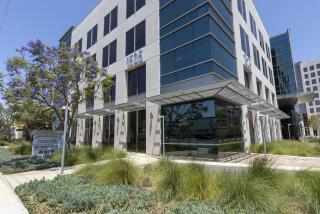Providing Access for Handicapped
- Share via
In his “Rescue Plan for a City at Risk” (Opinion, July 28), Richard J. Riordan identifies handicapped-access regulations as one of his “obstructions to business.”
It is ironic that Riordan believes that creating a barrier-free environment for persons with disabilities is a barrier to business. Handicapped access to public accommodations is a civil right in California and nothing less. The regulations governing handicapped access are the reasonable and fair result of thoughtful negotiation and compromise in the legislative process. Basically, all that is required under the State Building Code is for new buildings to be constructed in an accessible manner. Persons with disabilities should be able to get into the building, access public services and use public restrooms and telephones. The additional cost of designing and constructing an accessible new building (or of bringing an existing building into compliance at the time it undergoes significant structural remodeling) is negligible at best.
Barrier-free design allows persons with disabilities to participate fully in mainstream life. Accessible buildings permit persons with disabilities to enter the job market and buy goods and services at stores, restaurants and theaters. With more than 43 million Americans disabled, I would think that Riordan would consider getting people jobs and creating more tax-paying consumers good for business.
PAUL STEVEN MILLER
Director of Litigation
Western Law Center for the Handicapped
at Loyola Law School, Los Angeles
More to Read
Sign up for Essential California
The most important California stories and recommendations in your inbox every morning.
You may occasionally receive promotional content from the Los Angeles Times.













